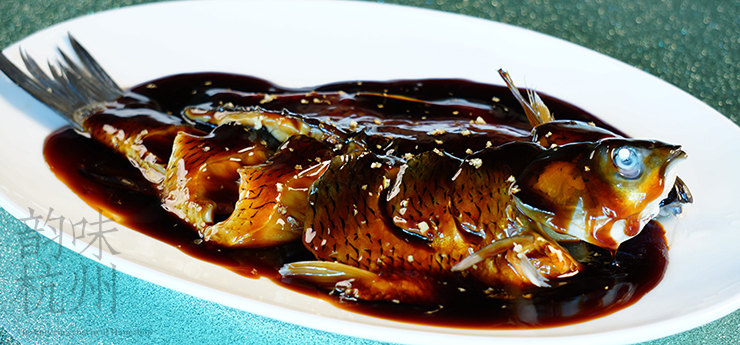

Hangzhou has a rather bookish beauty. Countless stories have been told about the landscape and architectural views. The city’s cuisine is no exception; myriad descriptions are found in books. The origins of the dish “West Lake Carp in Vinegar Sauce” can be traced all the way back to the Song Dynasty. This is a folk description dating back to that time.
Legend has it that “West Lake Carp in Vinegar Sauce” was also called “Brother and Sister-in-law Pass Along a Delicacy.” During the Song Dynasty, there were two brothers from the Song family. The elder brother was killed by a local tyrant, leaving his wife and younger brother to take care of each other to survive. The two pleaded with government officials to redress the injustice, but were repeatedly and rudely brushed off. In desperation, the younger brother was forced into exile for his safety. Before he departed, the sister-in-law cooked a dish for him, implying “do not forget the sour amidst the sweet,” in the hope that the younger brother would someday become an official himself and be able to achieve justice. That dish is today’s “West Lake Carp in Vinegar Sauce.”
Qing Dynasty poet and author Yuan Mei’s Suiyuan Shidan (Recipes from the Garden of Leisure) contains a recipe for “Fish in Vinegar”: “Cut live carp into large chunks, sauté in oil, sprinkle with soy sauce, vinegar, and rice wine. The more broth the better. Once cooked, quickly remove the wok from the heat. Five Willows at Hangzhou’s West Lake is famous for this dish.”
Liang Shiqiu of China’s Republican era (1911-1949) also described a method for cooking “West Lake Carp in Vinegar Sauce”: “Sauté the fish in vinegar; of course the vinegar is added to the sauce, but do not add too much. You can add some soy sauce, but do not add too much. There should not be too much sauce, and it should not be thick. Certainly do not make the sauce oily; it should be clear and light, and slightly transparent. A little ginger can be sprinkled onto the above; do not add spring onion slices, and absolutely do not add sugar. This is how to retain the flavor of the freshly killed living fish.”